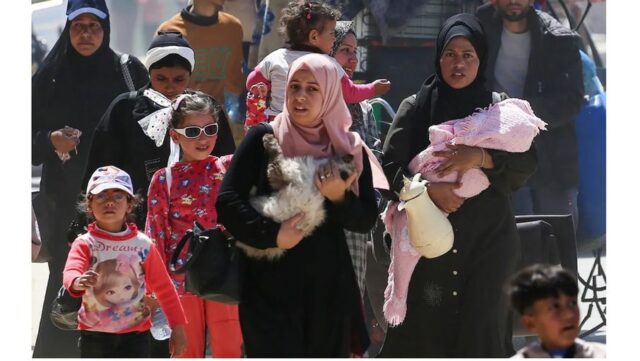In a major military escalation, the Israeli occupation army will control “the Morge axis”, an area between the city of Rafah and Khan Yunis, in the south of the Gaza Strip.
On Wednesday, the Prime Minister of Occupation Benjamin Netanyahu announced that the occupation will establish a new security passage in Gaza which would isolating the city of Rafah from the rest of the strip.
Netanyahu said: “We now divide the sector and increase pressure step by step until they brought us back,” said Netanyahu.
The Israeli occupation army resumed its bombing of the Gaza Strip on March 18, after two months of calm, following the collapse of the cease-fire agreement with Hamas.
Hamas said on Wednesday that he rejected the last cease-fire proposal presented by the occupation, accusing Netanyahu of “undermining any possible agreement”.
Israel insisted that military pressure is the only way to force Hamas to release the 60 remaining hostages.
The first stage of the armistice, which started on January 19, led to the return of 33 Israeli hostages, including eight dead, in exchange for the release of around 1,800 Palestinian prisoners.
The expansion of the military operation leads to the isolation of the city of Rafah of Khan Yunis, which gives the Israeli occupation army to control a third corridor alongside the “Philadelphia corridor” extending along the border with Egypt and the “Netsarim corridor” near the city of Gaza in the North.
This occurs at a time when the occupation forces ended the surroundings of the Tal Sultan region near Rafah, and dozens of Hamas fighters were killed, while the operations of the Israeli occupation army have shown no indication of the decline.
Eyal Zamir, general of the occupation army, said that battles would continue with a “studied and decisive pace”.
He added: “The only thing that can stop our progress is the release of our hostages.”
It is not yet clear the size of the additional land that Israel intends to control, or if the creation of the new security transition indicates an intention to include these land.
The Israeli occupation army had already issued evacuation warnings to residents of the Gaza Strip in certain southern regions, and a Palestinian radio reported that the areas surrounding Rafah have become almost completely empty after the evacuation orders.
An official of Hamas told AFP that the Egyptian-Qatari proposal last week included a 50-day ceasefire, during which the movement would release five Israeli soldiers, including a soldier with American citizenship. On the other hand, Israel is released from 200 prisoners, including 150 life sentences, in addition to 2000 Palestinians who have been arrested since October seventh.
The proposal also includes the withdrawal of the Israeli occupation army from the areas where it has been replaced since March 18.
Jonathan Whitital, the largest head of the United Nations Rescue in Gaza and the West Bank, said: “64% Gaza is subject to active forced travel orders or in the buffer zones if called,” said Jonathan Whitital, the largest rescue responsible for the United Nations in Gaza and in the West Bank.
He added: “There is no safe place, and no one is safe in Gaza.”
This escalation has strengthened the concerns of the Palestinians whom Israel could seek total control of the coastal sector, especially after the American president Donald Trump announced his future plans for Gaza.
Israeli officials said they would facilitate the Palestinians’ “voluntary outing” after Trump’s call to permanently evacuate Gaza and redevelop it under American control.
Israeli politicians have also derived from certain events in Gaza, which has been controlled by Hamas since 2007.
“I invite the residents of Gaza to move immediately to eliminate Hamas and return all the kidnappers. This is the only way to put an end to the war,” said Israel Israel Katz Minister of Defense in a statement. Agencies





